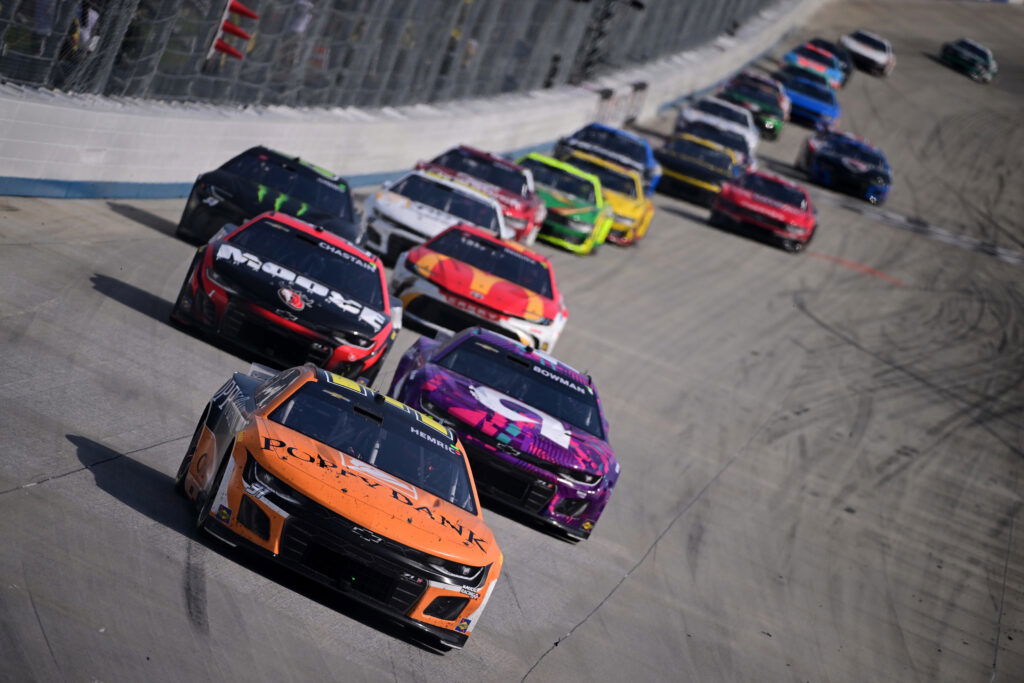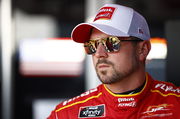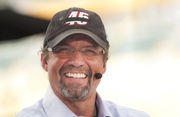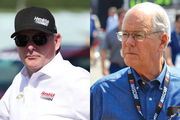

NASCAR’s 2026 Cup Series schedule has fans buzzing with fresh additions like Chicagoland Speedway’s return and a new San Diego street course, setting the stage for diverse racing challenges. Ben Kennedy, a former NASCAR Truck Series driver and currently acting as executive of NASCAR, brings firsthand experience to his role. As the great-grandson of NASCAR founder Bill France Sr., he understands that every track imposes unique demands on drivers and vehicles alike. Yet, with these new shifts, questions linger about how the current car setup will hold up, and Kennedy has a positive input to give.
Watch What’s Trending Now!
Ever since the Next Gen was introduced in 2022, the car has seen some shortcomings, like its inability to produce quality racing on short tracks, too much parity, and other high costs for its specialized parts. Tracks like Daytona International Speedway require supreme aerodynamic stability for high-speed drafting from the 2022-introduced Next Gen cars, while Martinsville Speedway tests braking and tire management in tight quarters. Back in 2007, the Car of Tomorrow was rolled out to address safety gaps exposed by various tracks, much like today’s evolving needs. So what tweaks are truly in play for the next car?
ADVERTISEMENT
Ben Kennedy’s vow: Tweaking the Next-Gen for better racing
In a recent episode of the Stacking Pennies podcast, NASCAR Executive Vice President Ben Kennedy opened up about the organization’s commitment to refining the Next-Gen car amid the 2026 schedule’s demands. He emphasized the constant evaluation process, saying, “I know they’re (R&D) looking at all the data that’s coming in every single race. And we have data from loop data, obviously, all of the tracking data, the car tracking data that we have around the tracks. The amount of passes that we have for the lead, the passes through the field, the Delta between first and second, and then we collect a lot of fan data from our fan cancel every single week. And we look at, you know, the social sentiment as well.”
This data-driven approach stems from the Next-Gen’s debut in 2022, when it aimed to boost parity but quickly revealed hurdles like reduced side force, making cars harder to handle in traffic, issues that flared up at tracks like Bristol, where multiple teams faced power-steering failures during a 2022 playoff race. Kennedy‘s promises tie directly to a grand plan of thoughtful evolution, balancing innovation with cost control to deliver top-tier racing.
He added, “And, you know, they’re constantly looking at, you know, what changes or tweaks could you potentially make to the car or the formats or the schedule in the future? And it’s going to be a balance at the end of the day, right? Because you can make a wide swath of changes pretty quickly. Obviously, that comes with costs and other considerations that you need to factor in when you make those changes.”
ADVERTISEMENT
These vows address some specific Next-Gen shortcomings, such as jarring crash impacts that led to concussions for drivers like Kurt Busch and Alex Bowman in 2022, prompting safety upgrades like enhanced rear crushability for 2023. Mainly on short tracks like Dover, which shifts to the All-Star Race in 2026, the car’s aero limitations have curbed passing, with fan feedback highlighting closer deltas between leaders as a target fix.
The France family’s influence shines through Kennedy’s calculated stance, echoing past adaptations like the 2023 mandates for data collection on incidents. This isn’t rushed; it’s about timing, as Kennedy stressed the need to gather industry input weekly. With new venues like San Diego’s street course amplifying demands for better braking and durability in areas where rear toe links have failed in prior races, these promises aim to iron out flaws exposed by the schedule’s variety. While domestic tweaks dominate, Kennedy’s vision extends farther, hinting at bolder horizons.
ADVERTISEMENT
Top Stories
‘RIP’: NASCAR World Crumbles in Tears as 39-YO Former JR Motorsports Driver Passes Away

EXCLUSIVE: Kyle Petty: NASCAR’s Renaissance Man

Jeff Gordon Duped Into False Hope as NASCAR’s Blatant Lie Exposes Jim France as Culprit No. 1

What Happened to Bill Elliott? Does Chase Elliott’s Father Have Cancer?

NASCAR Trapped in $61M Financial Nightmare as Steve O’Donnell Admits Stripping Team Power to Force Mexico Agenda

Kennedy eyes global push
Ben Kennedy isn’t stopping at U.S. borders, signaling NASCAR’s keen interest in international markets to grow the sport. He shared, “We’ve also talked about other opportunities for us internationally in the future, whether that’s north of the border in Canada or going back to Mexico.” This comes after Mexico City‘s 2025 event was dropped from 2026 to accommodate the upcoming 2026 FIFA World Cup, but Kennedy’s comments suggest a potential 2027 return, backed by ongoing talks and fan interest in regions last visited over a decade ago.
These plans build on NASCAR’s recent non-traditional successes, like the Chicago street races that drew crowds despite weather woes. Kennedy affirmed, “Those are on our radar as well,” pointing to Canada, absent since a 2019 Truck Series race at Canadian Tire Motorsport Park, and Mexico as priorities. Domestically, he’s eyeing the Pacific Northwest and Colorado, but the international nod aligns with broader goals, leveraging strong Northeast attendance at tracks like Pocono to test global appeal.
ADVERTISEMENT
Factoring in collaborations with broadcasters like FOX Sports, this expansion could mirror the Truck Series‘ 2026 St. Pete street race with IndyCar. No firm timelines exist beyond exploration, but Kennedy’s updates reflect data-backed moves, ensuring any step abroad resonates with competitors and fans alike.
ADVERTISEMENT
ADVERTISEMENT
ADVERTISEMENT

